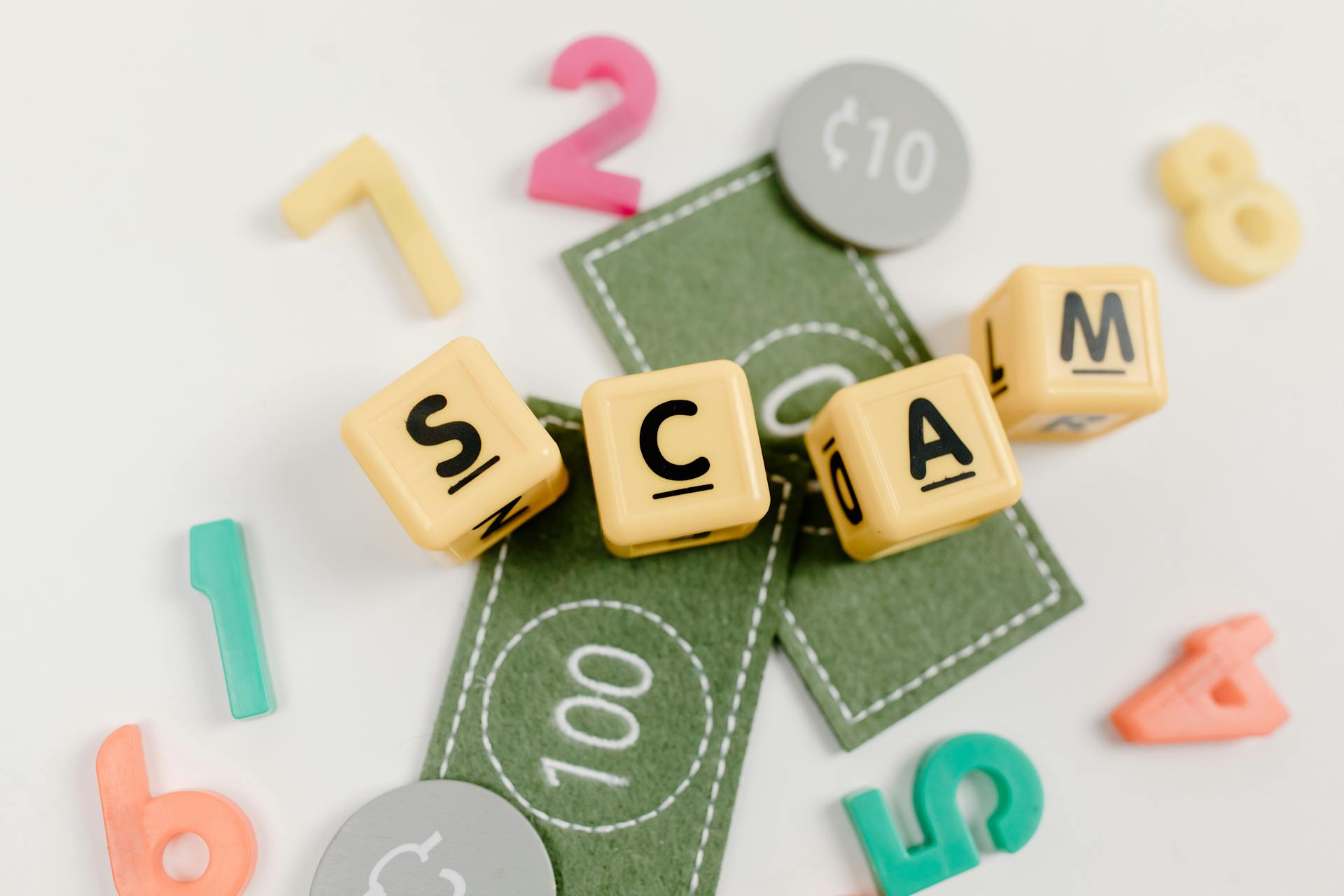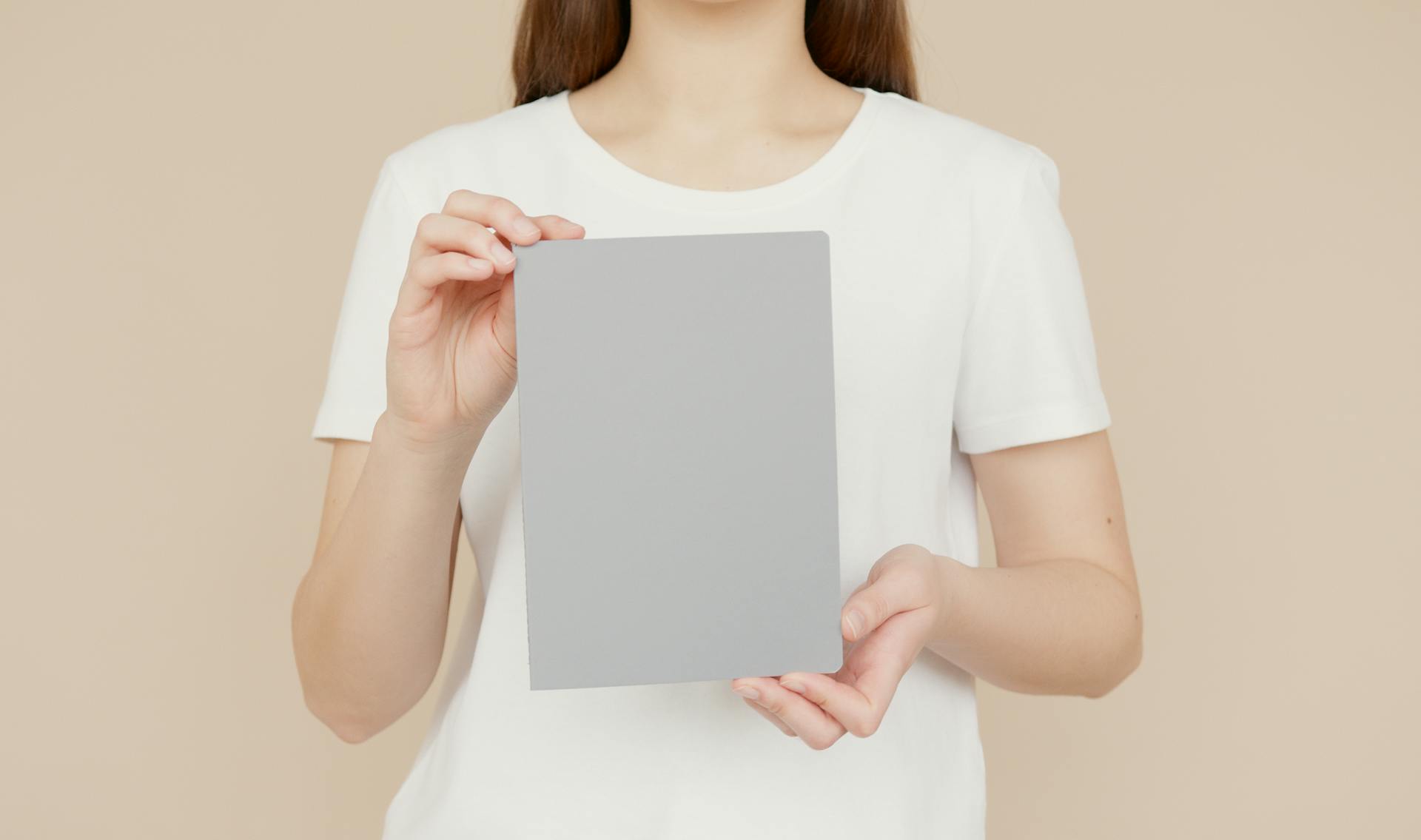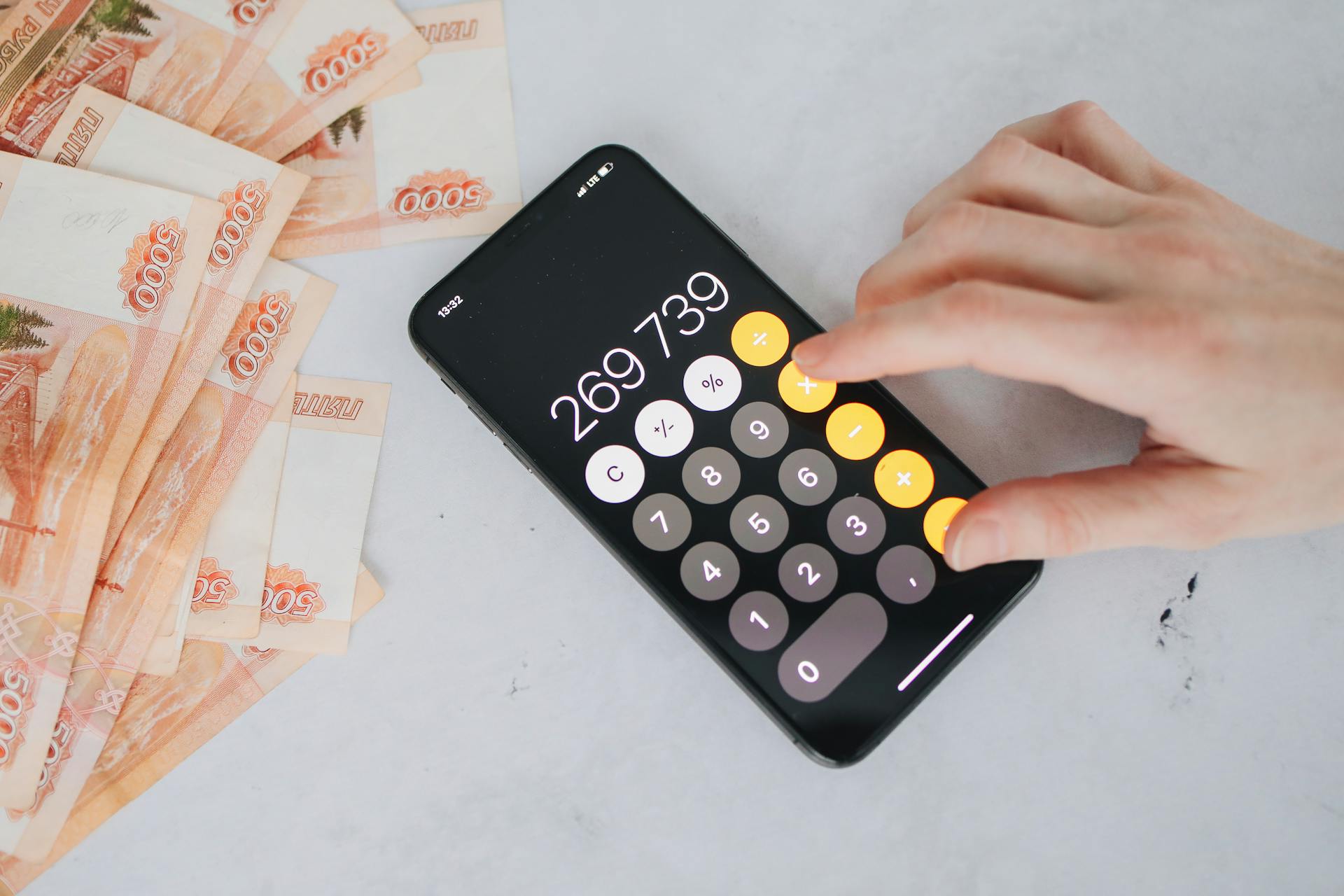
Fake checkbook scams are a growing concern, and it's essential to understand how they work and how to prevent them. Scammers often use fake checkbooks to deposit counterfeit checks into victims' accounts.
A fake checkbook scam typically starts with a scammer sending a fake check to a victim, who then deposits it into their account. This is often done through email, social media, or text message.
The scammer will then ask the victim to send them money, usually by wire transfer or prepaid debit card, claiming it's for a fee or tax on the deposited check. This is a classic case of a fake checkbook scam.
Victims often fall for these scams because they believe the check is legitimate, but in reality, it's a fake check that will eventually bounce, leaving the victim with a significant loss.
Common Scam Variations
Scammers use fake checks to get your money in various ways.
One common scam is the mystery shopping scam, where you're hired as a mystery shopper and asked to deposit a check and wire money to someone else. This is a classic example of a fake check scam.
A different take: Fake Money Atm
Some scammers pose as personal assistants and ask you to deposit a check and buy gift cards, sending the PIN numbers to your "boss." But that's just a scammer trying to get your money.
Car wrap decals scams are another variation, where you're asked to deposit a check and send money to decal installers. But the installers aren't real, and your money is gone.
Sweepstakes scams are also common, where you're told you've won a prize and need to send money to cover taxes or shipping charges. But legitimate sweepstakes don't work this way.
Online sellers may also use fake check scams by sending you a check for too much money and asking you to refund the balance. Don't fall for it!
Here are some common fake check scam variations to watch out for:
Protecting Yourself
Don't accept a check that's made out for more than the price of the item or service you're selling. Insist that the buyer make out a new one for the correct amount.
To verify the legitimacy of a check, call the issuing bank to verify the account. You can also call the issuer to verify that the check is real. Look for the issuer's phone number online rather than relying on the contact information printed on the check.
Never use money from a check to send gift cards, money orders, cryptocurrency, or to wire money to anyone who asks you to. This is a common tactic used by scammers to drain your funds.
Some warning signs of counterfeit checks include irregular perforations, missing check numbers, incorrect routing codes, odd magnetic ink character recognition (MICR) lines, notations in the memo area, stains or discolorations on the check, and other discrepancies.
Do not rely on a phone number for a bank that a seller prints on a check. Instead, look up the bank's number on its official website.
A different take: How to Find Account Number on Checkbook
Your Bank
Your bank plays a crucial role in protecting you from fake checks. Banks have to make deposited funds available quickly, usually within two days, but that doesn't mean the check is legitimate.
If you receive a check from someone you don't know, don't rely on the money until you've verified the check. Fake checks can take weeks to be discovered and untangled, leaving you stuck with the bill.
To check if a routing code is legitimate, search for it on the Federal Reserve Bank Services website. If the routing number doesn't match the bank name on the check, it could be a sign of a scam.
Curious to learn more? Check out: Chase Debit Card Routing Number
Verify Legitimacy
Don't rely on a phone number for a bank that a seller prints on a check. Look up the bank's number on its official website instead.
Always verify the legitimacy of a check by calling the issuing bank to confirm the account and check details. This can be done by searching online for the bank's official phone number.
A check that's made out for more than the price of the item or service is likely a scam. Insist that the buyer make out a new one for the correct amount.
For more insights, see: Fake Debt Collectors Phone Numbers
To verify a check's legitimacy, examine it carefully for irregularities like irregular perforations, missing check numbers, incorrect routing codes, and odd magnetic ink character recognition (MICR) lines.
You can also check if the check feels thin or slippery, or if the paper is of poor quality. Real checks are usually printed on thick, high-quality card stock.
Here's a quick checklist to verify a check's legitimacy:
- Look for irregular perforations
- Check for missing check numbers
- Verify the routing codes
- Examine the magnetic ink character recognition (MICR) lines
- Check for stains or discolorations on the check
- Check the check's paper quality
If you're unsure about a check's legitimacy, it's always best to err on the side of caution and not accept it.
Signs of Scams
If a check is made out for more than the price of the item or service, it's likely a scam. You should insist that the buyer make out a new one for the correct amount.
Scammers may use advanced counterfeiting methods to create fake checks that appear legitimate. They can even use chemicals to erase the ink on the check and increase the amount payable.
For another approach, see: Can You Use Checkbook with Old Address
Irregular perforations, missing check numbers, and incorrect routing codes are all warning signs of a counterfeit check. You should also be cautious of checks with odd magnetic ink character recognition (MICR) lines, notations in the memo area, stains or discolorations, and other discrepancies.
If a buyer pressures you to wire back funds, it's a red flag. You should back out of the sale and report the incident to your bank.
Here are some warning signs of a fake check scam:
If you receive a check that seems suspicious, don't give in to pressure to move fast on a payment. It's always better to wait and verify the check's legitimacy.
Security Features
Fake checks can be tricky to spot, but there are some key security features to look out for. Manufacturers use special inks that react with eradication chemicals.
Watermarks are a common security feature found in many checks. These are transparent patterns that can only be seen when held up to the light.
Chemical voids are another security feature that can be difficult to replicate. They're usually invisible to the naked eye, but can be detected with the right tools.
High-resolution microprinting is also a sign of a genuine check. This involves tiny text that's hard to read with the naked eye.
These security features are designed to make it hard for counterfeiters to create fake checks that look like the real thing.
Prevention and Action
To avoid falling victim to a fake check scam, it's essential to be cautious when accepting checks. Don't accept counter checks or overpayments, as scammers may send a check for more than the sale price and ask you to send them the difference.
Be wary of post-dated checks in someone else's name, as this could be a sign of check fraud. Look for checks that display signs of tampering, such as altered ink or chemical alterations. Report the incident within one year to increase the chances of recovering your loss.
Never use money from a check to send gift cards, money orders, cryptocurrency, or to wire money to anyone who asks you to. This is a common tactic used by scammers to get their hands on your money.
Toss offers that ask you to pay for a prize, as this is often a scam. If it's free, you shouldn't have to pay to get it. Only scammers will ask you to pay to collect a "free" prize.
To protect yourself, suggest that a buyer use a safer alternative, such as an online peer-to-peer service like PayPal. Examine checks carefully for irregularities, and back out of a sale if the buyer pressures you to wire back funds.
Here are some warning signs of fake checks:
- Irregular perforations
- Missing check numbers
- Incorrect routing codes
- Odd magnetic ink character recognition (MICR) lines
- Notations in the memo area
- Stains or discolorations on the check
- Other discrepancies
If you suspect a fake check, report it immediately to the Federal Trade Commission, the U.S. Postal Inspection Service, and your state Attorney General. Do not accept a check that's made out for more than the price of the item or service you're selling.
Avoiding Scams
To avoid falling victim to a fake check scam, it's essential to be cautious when dealing with checks from unfamiliar sources. Never use money from a check to send gift cards, money orders, cryptocurrency, or to wire money to anyone who asks you to.
Be wary of offers that ask you to pay for a prize, as legitimate prizes are always free. If someone asks you to pay to collect a "free" prize, it's likely a scam. Additionally, never accept a check for more than the selling price, as this is a sure sign of a scam.
Here are some key things to remember when dealing with checks:
- Don't accept a check from an out-of-town bank without verifying its legitimacy.
- Examine checks carefully for irregularities, such as missing check numbers or incorrect routing codes.
- Don't wire money to people you don't know.
- Don't give in to pressure to move fast on a payment to secure a job or supposed financial windfall.
By being aware of these potential red flags, you can protect yourself from falling victim to a fake check scam.
Avoiding Common Scams
If you're selling something online, be wary of buyers who want to pay with a check. Never use money from a check to send gift cards, money orders, cryptocurrency, or to wire money to anyone who asks you to.
Don't accept a check for more than the selling price - it's almost always a scam. Toss offers that ask you to pay for a prize, because if it's free, you shouldn't have to pay to get it.
Here are some red flags to watch out for:
- Irregular perforations
- Missing check numbers
- Incorrect routing codes
- Odd magnetic ink character recognition (MICR) lines
- Notations in the memo area
- Stains or discolorations on the check
- Other discrepancies
If you do accept a check from an out-of-town bank, call it before you deposit the check to verify that the check is genuine. And don't wire money to people you don't know - it's like giving them cash.
Printable Pretend Play for Kids
Printable pretend play for kids is a great way to teach them valuable skills while having fun. Engaging in activities like writing out amounts and practicing basic addition can help improve your child's math skills in a hands-on manner.
Using a cash register and printable pretend checks can become a cherished part of your child's play routine. It's a gift that keeps on giving, and my daughter's cash register is still one of her favorite toys years after she received it.
For your interest: What Is the Purpose of a Checkbook Register
Pretend play encourages creativity and imaginative thinking, allowing your child to invent scenarios, items, and services for which they're writing checks. This creative thinking ability is essential for problem-solving and critical thinking.
By introducing the concept of checks and money at an early age, you're laying the foundation for understanding financial transactions and responsible money management. It's amazing to see how kids can grasp these complex concepts when presented in a fun and interactive way.
Here are some benefits of using printable pretend checks for kids:
By incorporating printable pretend checks into your child's playtime, you're giving them the opportunity to develop essential skills that will benefit them throughout their lives.
Frequently Asked Questions
Can a fake check have a real routing number?
Yes, a fake check can have a real routing number, but it's invalid if it doesn't match the bank being used. This is a common tactic used by scammers to try and trick you into accepting a fake check.
What is a checkbook?
A checkbook is a book containing preprinted checks for paying bills and expenses. It's a convenient tool for managing your finances and making transactions.
Sources
- https://consumer.ftc.gov/articles/how-spot-avoid-report-fake-check-scams
- https://www.aarp.org/money/scams-fraud/info-2020/fake-check.html
- https://www.identityguard.com/news/how-to-tell-if-a-check-is-fake
- https://www.wikihow.com/Spot-a-Fake-Check
- https://www.printables4mom.com/printable-pretend-checks-for-kids/
Featured Images: pexels.com


